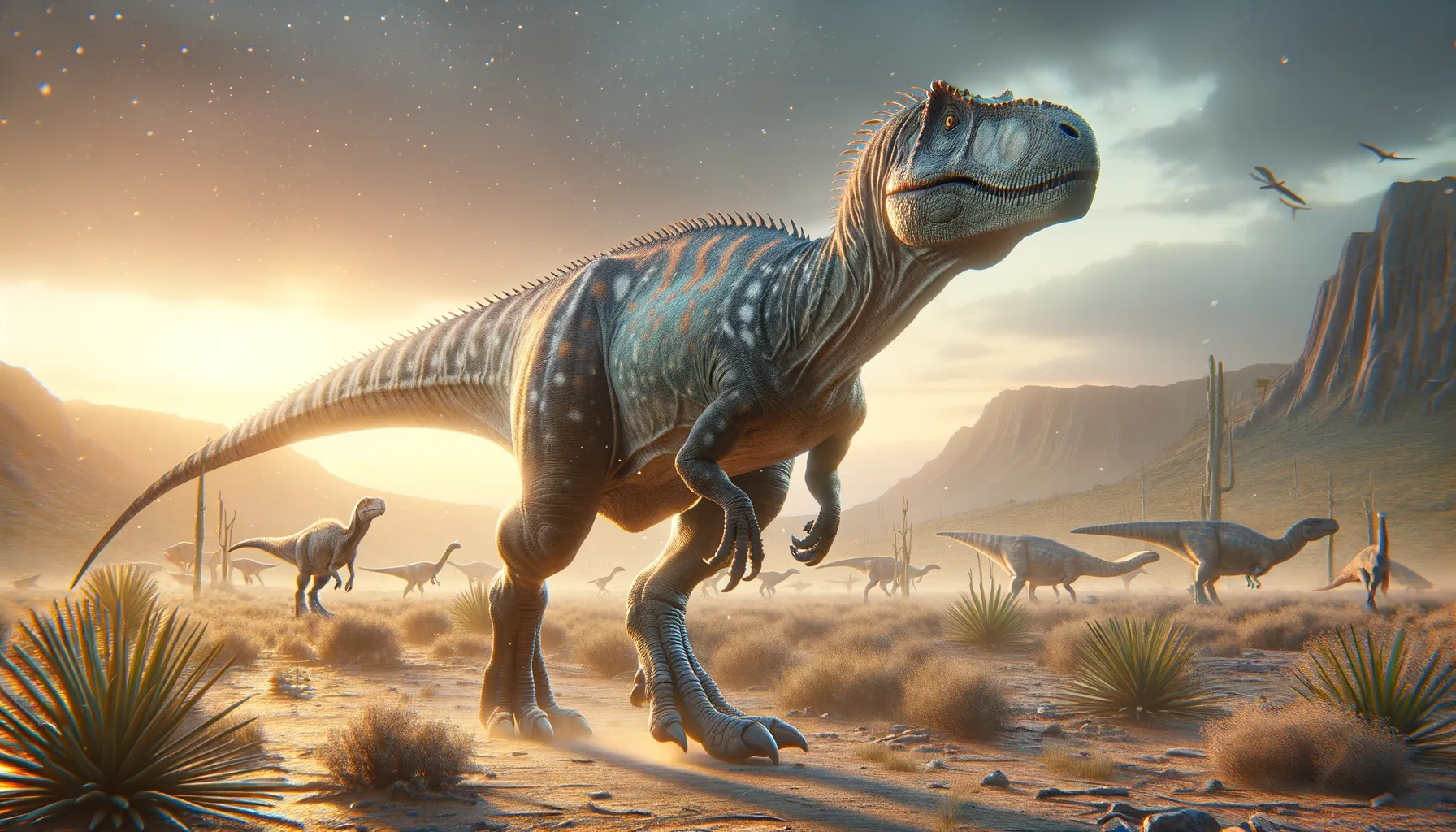
Tawa
An agile predator from the Triassic age.
Period
Triassic
Length
Roughly 2 to 3 meters long.
Height
Approximately 0.5 to 1 meter tall.
Weight
Around 15 to 30 kilograms.
Tawa was an early dinosaur that roamed North America during the Late Triassic period. It was a bipedal carnivore, meaning it walked on two legs and primarily ate meat. Its discovery provided valuable insights into the diversity and early evolution of theropods, a group that would eventually include the mighty Tyrannosaurus rex. Tawa is noteworthy for its well-preserved fossils, which have helped paleontologists understand more about early dinosaur relationships.
Diet
Tawa was a carnivore, feeding primarily on small animals. Its sharp teeth and agile body allowed it to catch a variety of prey.
Hunting
Tawa likely relied on stealth and speed to hunt, using its agility to ambush or chase down small creatures. Its small size would have made it nimble in dense vegetation.
Environmental challenges
Living during the Triassic period, Tawa faced environmental challenges such as shifting climates and volcanic activity. These conditions would have influenced prey availability, forcing Tawa to adapt its diet. As a predator, Tawa also navigated a landscape shared with other emerging dinosaur species, with competition for resources being a significant challenge.
Speed
Moderate runner, likely agile for quick maneuvering.
Lifespan
Estimated to live several decades, similar to modern reptiles.
First discovery
Discovered in 2004 in New Mexico, USA.
Fun Facts
- Tawa was a small, meat-eating dinosaur that lived around 215 million years ago in what is now New Mexico, USA.
- Tawa was about the same size as a large dog, with a body length of around 6 to 8 feet long.
- Its name, 'Tawa,' comes from the Hopi word for the sun god, as the fossils were found in the sunny American Southwest.
- Tawa had sharp teeth and three-fingered hands, which made it an agile predator of its time.
- The discovery of Tawa helped scientists understand more about the early evolution and spread of dinosaurs across Pangaea.
- Its skeleton is relatively complete compared to many other Triassic dinosaurs, providing significant insights into its anatomy and lifestyle.
- Tawa is considered an early theropod, a group that later included famous dinosaurs like Tyrannosaurus rex and Velociraptor.
Growth and Development
Tawa's growth patterns might have involved rapid development to quickly reach a size capable of fending off predators. Like many early dinosaurs, it likely hatched from eggs, growing steadily through its juvenile stages. Studies of its bone structure suggest it may have had growth spurts during juvenile years.
Habitat
Tawa lived in what is now North America, in environments that were possibly semi-arid with seasonal rivers or streams. These areas provided ample resources for hunting and nesting. Its habitat likely included dense foliage that offered cover for hunting and protection from larger predators.
Interaction with other species
As a predator, Tawa interacted predominantly with prey species, though it may have occasionally faced competition from other small theropods. It had to coexist with various herbivores and other predators, forming a complex food web. Fossil evidence suggests it may have shared its habitat with early crocodile relatives.
Natural lifespan
Tawa might have lived for about 10 to 20 years naturally.
Reproduction
Reproduction in Tawa, like other dinosaurs, was likely through laying eggs. Its reproductive strategies may have included nesting sites, with some parental involvement hinted at by fossil evidence of other similar species. The exact details remain subject to ongoing research.
Social behaviour
Tawa's social behavior is not fully understood, but it might have been a solitary predator, with possible group behavior during juvenile stages as seen in some modern birds. Limited evidence suggests it may have formed loose groups or pairs for breeding.
Fossil locations
Tawa fossils were first found in New Mexico, particularly in the Hayden Quarry at Ghost Ranch. This site is significant for understanding early dinosaur ecosystems. Additional excavations may unveil more locations, shedding light on its distribution and ecological roles.
